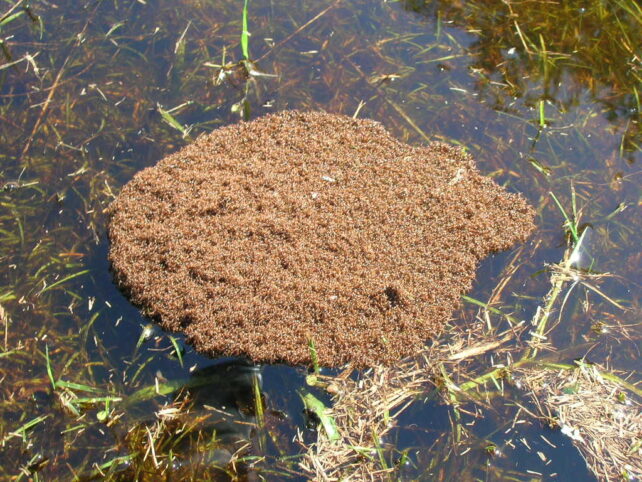It has long been known that many people depend on the world’s largest mangrove forest, the Sundarbans, for their livelihoods, as the forest naturally provides resources including fish, crabs, honey and timber. To maintain a balance between resource extraction and forest health, the Bangladesh Forest Department has issued fee-based permits to harvest resources from certain areas of the Sundarbans, except during June, July and August, the breeding season for wild animals. .
However, some fishermen have been using poison to catch fish throughout the year, even during the closed season, which is damaging the nature of the forests and the health of those who eat the poisoned fish.
Considering the damage to the largest mangrove forest and the health of people, the Supreme Court of Bangladesh issued a judgment in response to a written petition to stop this bad practice in September 2021.
However, this practice is still going on, as the Forest Department officials have not been able to stop it.
Abdul Alim, a resident of the Sundarbans’ southwestern Khulna district, described the poison fishing process: “They use motor-driven boats to enter the Sundarbans. They use poison; it’s a kind of syrup. If anyone spills a drop in the water, within a few minutes, fish, crabs and other aquatic animals are crawling to the shore to save their lives.”
In this way, fishermen can catch a good amount of fish in a short period of time, he said, adding that those who are involved in using poison in fishing usually use motor-driven boats to move quickly to escape, without anyone catching them.
The Sundarbans spread across the Bay of Bengal, in both Bangladesh and India. According to the Bangladesh Forest Department, the 6,017 square kilometers (2,323 square miles) of the Sundarbans in Bangladesh shelter about 210 species of white fish, 24 species of shrimp, 14 species of crabs, 43 species of mollusk and more a type of lobster.
“[Poison fishing] it is a serious concern for forest biodiversity. It destroys the life of all living things in the forest. The government took early steps to end this practice under the Forest Act, but no one followed these laws. Powerful groups operate in powerful places, and no one can stop them. This is very unfortunate,” said Shafiqul Islam, Department of Marine Science and Fisheries, Chittagong University.
Mihir Kumar, Khulna Circle ranger, Bangladesh Forest Department, does not deny this. “We are not denying that it is not happening, but our efforts must be counted,” he said. “In the month of March this year, we arrested three people when they caught fish with poison. We filed a case under the Forest Act. Our efforts to curb this bad trend are ongoing.”
In many cases, fish caught with poison are dried in remote areas inside the forest before being taken to the local market as dried fish, as local fish sellers often refuse to buy such fish, said Abdul Alim.
Some live fish are sent to various urban areas where no one knows where the fish came from, he added.
Fish caught using poisons are also sold in the market, causing health problems. According to Johns Hopkins Medicine, eating poisonous fish can cause different abnormalities in human health, including gastrointestinal, neurological and cardiovascular, and the main symptoms include nausea, vomiting, diarrhea and headache.
“This is very dangerous to health,” said Shafiqul. If you do not know that the fish is poisoned and eat those fish, it will affect your organs a little. In time, many diseases will occur just by eating this poisonous food; that is, medals, crabs, and other fish.”
Factors behind illegal fishing
According to a recent study, more than 1.7 million people from eight upazilas (subdistricts) consisting of 76 villages are immediately adjacent to the border of the Sundarbans. As people’s proximity to the forest increases, their dependence on natural resources increases significantly, and about 78% of households within 2 km (1.2 miles) of the forest boundary depend on the Sundarbans for their livelihoods.
As agriculture is unprofitable in the region due to increased soil salinity, climate change and frequent changes in river flow, the main livelihood of the area comes from harvesting resources from the Sundarbans.
A community that depends on changes in forest dependence and seasons because the entire collection of resources from the Sundarbans is seasonal. However, fishing has emerged as one of the main sources of livelihood for local forest dwellers, and unemployment has forced them to break laws and regulations, according to the survey.
This article was originally published Mongabay.
#Sundarbans #poison #fishing #continues #Bangladeshi #court #order





